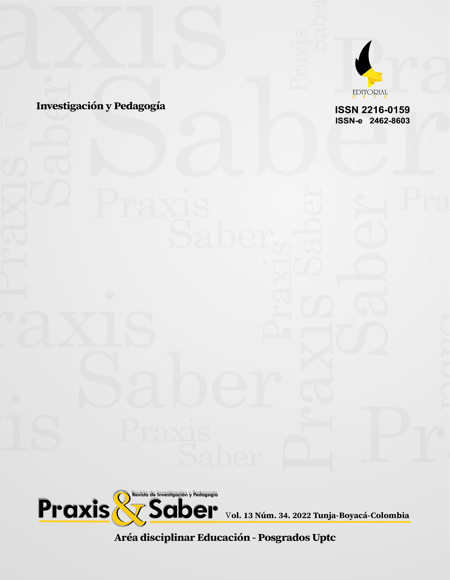Multimodality and digital games as motivational resources for learning English in high school

Abstract
This research studies how pedagogical practices involving multimodality and digital games motivate the learning of English as a second language in the context of high school. The research is of a mixed type, with an applied approach. In this sense, a multimodal practice was proposed and applied involving digital games, to support the process of reading, textual comprehension, and writing in English for high school students. The practice was carried out in two classes for two groups of different contexts, which included students between 15 and 21 years old. Data collection was done through questionnaires with open and closed questions to the students and through semi-structured interviews with the teachers responsible for the implementation of the classes. The information obtained through these instruments underwent content and sentiment analyses. Based on the analysis of the results, it was found that multimodal practices linked to digital games influence the motivation of the subjects in the processes of reading, of textual comprehension and of writing in English language, which favors the process of learning the language.
Keywords
english language, multimodality, digital games, motivation
References
- Amador-Baquiro, J., Barragán-Giraldo, D., & Álvarez-Vargas, C. (2022). Memoria del pasado reciente en la escuela: saberes prácticos de profesores y mediaciones multimodales. Praxis & Saber, 13(32), e12911. https://doi.org/10.19053/22160159.v13.n32.2022.12911 DOI: https://doi.org/10.19053/22160159.v13.n32.2022.12911
- Baladeli, A. (2021). Ensino crítico de língua inglesa: caminhos para integrar a teoria dos multiletramentos à prática pedagógica. Brazilian Journal of Development, 7(8), 82714-82726. https://doi.org/10.34117/bjdv7n8-469 DOI: https://doi.org/10.34117/bjdv7n8-469
- Bardin, L. (2011). Análise de conteúdo. Edições 70.
- Elicker, A., & Barbosa, D. (2021). Literacia Digital (1ª ed.). Cirkula.
- Ellis, R. (1997). Second Language Acquisition. Oxford.
- Ferreira, M., & Ribeiro, P. (2022). O movimento corporal na aprendizagem de vocabulário em L2/LE em ambientes imersivos. Ilha do Desterro, 74, 369-391. https://doi.org/10.5007/2175-8026.2021.e80715 DOI: https://doi.org/10.5007/2175-8026.2021.e80715
- Gonçalo, C. (2022). Duolingo: uma promessa de aprendizado gratuito de língua inglesa – Uso com adolescentes do 1° ano do ensino médio em duas escolas de Almenara-MG. Revista Ibero-Americana de Humanidades, Ciências e Educação.
- Kao, C. (2014). The effects of digital game-based learning task in English as a foreign language contexts: a meta-analysis. Education Journal, 42(2), 113-141. https://www.hkier.cuhk.edu.hk/journal/document/EJ/EJ_V42N2_113-141.pdf
- Lauermann, V. (2019). Multimodalidade aplicada à leitura, compreensão textual e escrita em língua inglesa para alunos do ensino médio [Dissertação de Mestrado, Universidade Feevale]. Biblioteca Universidade Feevale. https://biblioteca.feevale.br/Vinculo2/00001f/00001f7f.pdf
- Liu, B. (2012). Sentiment Analysis and Opinion Mining. Morgan & Claypool Publishers. DOI: https://doi.org/10.1007/978-3-031-02145-9
- Marques, M. (2021). Análise de conteúdo. Clube de Autores.
- Ministério da Educação do Brasil. (2017). Base Nacional Comum Curricular – BNCC: 3ª versão. http://basenacionalcomum.mec.gov.br/images/BNCC_publicacao.pdf
- Oliveira, F. (2021). O uso de blogs como ferramenta de apoio ao desenvolvimento da produção escrita em língua inglesa. Trabalhos em Linguística Aplicada, 60(3), 791-810. https://periodicos.sbu.unicamp.br/ojs/index.php/tla/article/view/8659084 DOI: https://doi.org/10.1590/0103181310810711120210729
- Prensky, M. (2012). Aprendizagem baseada em jogos digitais. Editora Senac São Paulo.
- Santaella, L. (2010). A ecologia pluralista da comunicação: conectividade, mobilidade, ubiquidade. Paulus.
- Santos, F., & Ferreira, C. (2020). Era multimodal e tecnológica: que recursos utilizar no ensino de línguas estrangeiras/adicionais? LínguaTec, 5(2), 149-168. https://doi.org/10.35819/linguatec.v5.n2.4539 DOI: https://doi.org/10.35819/linguatec.v5.n2.4539
- Santos, P., Barbosa, D., Mossmann, J., Cerqueira, B., & Santos dos, Y. (2020). Conscientização ambiental em construtos digitais de aprendizagem: a experiência do jogo “Guardiões das Águas”. Debates em Educação, 12(27), 593-614. https://doi.org/10.28998/2175-6600.2020v12n27p593-614 DOI: https://doi.org/10.28998/2175-6600.2020v12n27p593-614
- Savonitti, G., & Mattar, J. (2017). Games de entretenimento para o ensino de inglês como segunda língua: características e potencial. Em SBC – Proceedings of SBGames 2017 (pp. 722-731). Curitiba.
- Silge, J., & Robinson, D. (2016). tidytext: Text Mining and Analysis Using Tidy Data Principles. Journal of Open Source Software, 1(3). https://doi.org/10.21105/joss.00037 DOI: https://doi.org/10.21105/joss.00037
- Todorov, J., & Moreira, M. (2005). O Conceito de Motivação na Psicologia. Revista Brasileira de Terapia Comportamental e Cognitiva, 7(1), 119-132. http://pepsic.bvsalud.org/scielo.php?script=sci_arttext&pid=S1517-55452005000100012&lng=pt&tlng=pt DOI: https://doi.org/10.31505/rbtcc.v7i1.47
- Weissheimer, J., & Braga, I. (2017). Aplicativos digitais móveis nas aulas de inglês: efeitos da gamificação na aprendizagem e na motivação dos aprendizes. Hipertextus Revista Digital, 16, 91-109. https://periodicos.ufpe.br/revistas/hipertextus/article/view/247930/36444
